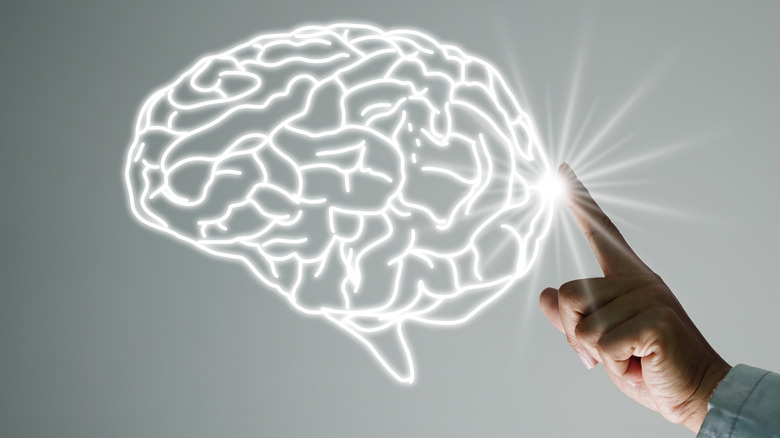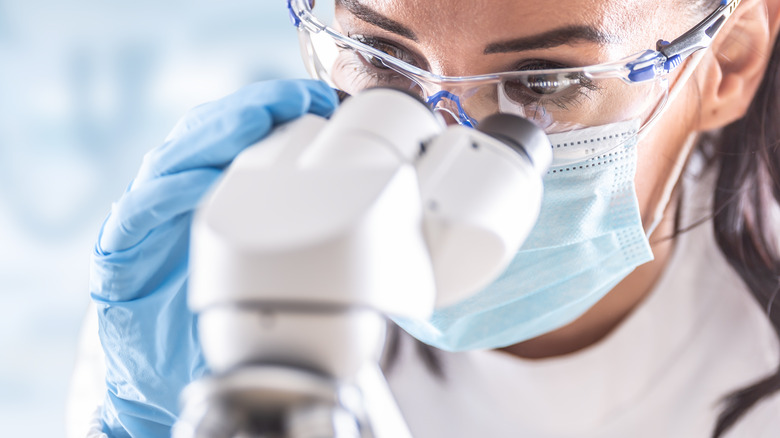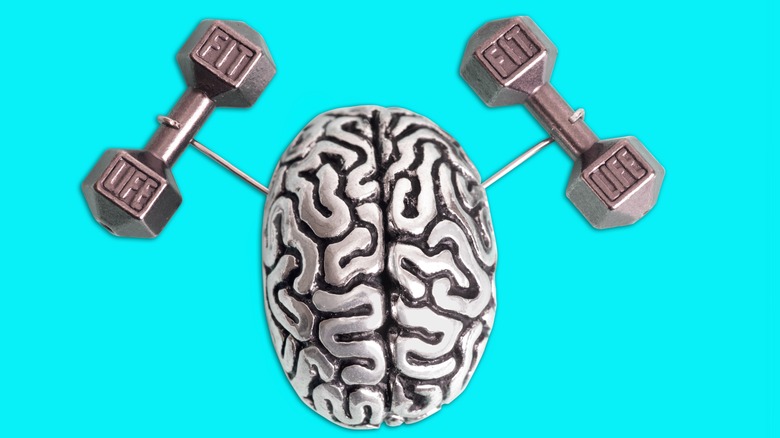'Intelligence In A Dish': How Biocomputers Could Make Science Fiction A Reality
As the world braced for the long-term effects of artificial intelligence like ChatGPT in 2023, Johns Hopkins University researchers announced new developments in biocomputing, referred to as organic intelligence, or "intelligence in a dish," The Johns Hopkins News-Letter reports. As published in the journal Frontiers in Science, to reach their conclusions, Johns Hopkins scientists connected 3D brain cultures — or so-called brain organoids developed from stem cells — to computer interfaces and other digital sensors and machinery. Unlike artificial intelligence (AI), which in a sense asks a computer to mimic human brain function, organic intelligence (OI) instead uses brain cultures filled with connection-forming neurons to — in theory — replicate computer processes, according to CNN.
The practical application of these Johns Hopkins organic intelligence developments could lead to massive biocomputers of the future — tiny brain cultures all linked together with the ability to learn. These potential biocomputers would be much more powerful, smaller, and efficient than the supercomputers we know today and could open up whole new worlds of possibility in healthcare, research, and science. Although OI would revolutionize supercomputing as we know it, it would also present a number of ethical quandaries.
Can brain organoids learn?
Central to the viability of biocomputing is whether or not brain organoids can think and learn. Currently, the brain cultures used in Johns Hopkins research contain some 50,000 cells. For biocomputing to become a reality, Dr. Thomas Hartung of the Johns Hopkins Bloomberg School of Public Health — a senior study author — told CNN that number would reportedly need to be closer to 10 million. Until now, there was also no way to communicate with a brain organoid to feed it information or determine if it has learned, what it might be thinking, or how it feels. Hopkins scientists have a plan to make that happen, though, with a mix of existing and new technologies, as outlined in another Johns Hopkins article published in Science Advances in 2022.
Multiple points of communication could theoretically allow a biocomputer of the future to engage in a number of different functions simultaneously. As well as neurons, brain cultures are rich with supporting cells and primed to learn through specific types of gene expressions. According to Hartung, that technology — referred to as microelectrode arrays, or MEAs — are like flexible shells, "densely covered with tiny electrodes that can both pick up signals from the organoid, and transmit signals to it." Should artificial intelligence and organic intelligence be one day linked to this machinery, possibilities for learning and growth could be endless.
There's massive OI potential in healthcare
Should organic intelligence or biocomputing come about, as described by Johns Hopkins researchers, one area that might be especially impacted is healthcare. This is especially when diagnosing and treating neurological conditions, depending on the stem cell donor. For example, Dr. Thomas Hartung (pictured) from Johns Hopkins told CNN that with OI, "We could compare memory formation in organoids derived from healthy people and from Alzheimer's patients, and try to repair relative deficits. We could also use OI to test whether certain substances, such as pesticides, cause memory or learning problems." Theoretically, biocomputing could also expand our understanding of autism spectrum disorders, Hartung added.
On the potential of biocomputing in healthcare research and treatment, Lena Smirnova — environmental health and engineering assistant professor at the Johns Hopkins Bloomberg School of Public Health, who was involved in the OI research — said (via The Johns Hopkins News-Letter), "We have developed a concept of organoid intelligence to explore the potential of human brain cell-based organoid cultures, advance our understanding of the brain and neurological diseases and unleash new forms of biocomputing." With a biocomputer as envisioned, she added: "We can tackle a lot of different aspects. For example, advanced models for neurodevelopmental disorders. Or neurodegeneration, which can help with drug development."
Would a biocomputer be truly conscious?
The primary ethical question about the prospective development of an organic computer is whether or not the end result might become conscious — or even possibly feel pain or have memories. Generated from stem cell donors, there's concern over whether or not that donor could claim rights over the resulting brain organoid. According to Lena Smirnova, the research team took ethical considerations into account, and the biocomputing as described in the Johns Hopkins research would recognize and address such implications.
Speaking with CNN, Dr. Thomas Hartung offered more detail. "A key part of our vision is to develop OI in an ethical and socially responsible manner," he said. "For this reason, we have partnered with ethicists from the very beginning to establish an 'embedded ethics' approach. All ethical issues will be continuously assessed by teams made up of scientists, ethicists and the public, as the research evolves."
For now, an organic intelligence supercomputer remains theoretical, but as the John Hopkins research illustrates, it is now within the realm of possibility. On that note, Smirnova said (via The Johns Hopkins News-Letter): "We are very much aware that we put our very ambitious goals there. But this is what makes our work as scientists so exciting — overcoming the challenges, getting new insights into the complexity of human biology in order to advance human health and make our world a safer place."
Today's brain organoids are no match for the human mind
Ethical issues aside, as it stands, much like AI, OI has a long way to go before it comes close to matching the learning and computational prowess of the human mind. AI still can't solve CAPTCHA, or "Completely Automated Public Turing Test to Tell Computers and Humans Apart," those online gatekeepers meant to prevent computers from treading in digital spaces meant for flesh-and-blood people. At only 50,000 cells, brain organoids are currently about the same size as an entire fruit fly's nervous system — a far cry from what's between our ears.
Speaking with Newswise, Dr. Thomas Hartung from Johns Hopkins said: "Brains also have an amazing capacity to store information, estimated at 2,500 terrabytes." Hartung went on to add, "It has about 100 billion neurons linked through over 1015 connection points. It's an enormous power difference compared to our current technology." According to the researcher, we've reached the limits of traditional Silicon-based computing, and biocomputing might be the next step.
To illustrate how close we are to OI but how much work remains, a flat brain cell culture has reportedly learned to play the classic video game "Pong." From those humble beginnings, Hartung said (via Newswise): "[I]t's just a matter of building the community, the tools, and the technologies to realize OI's full potential."




